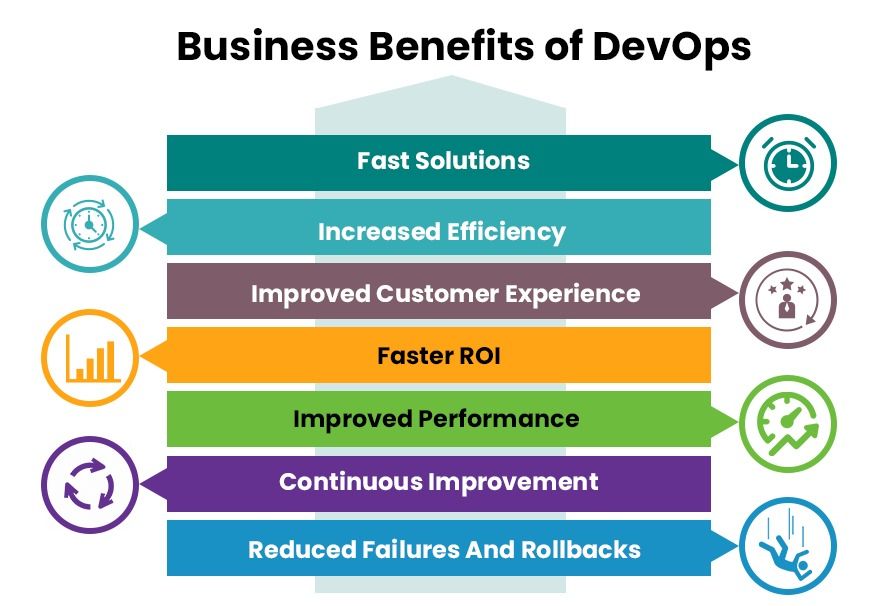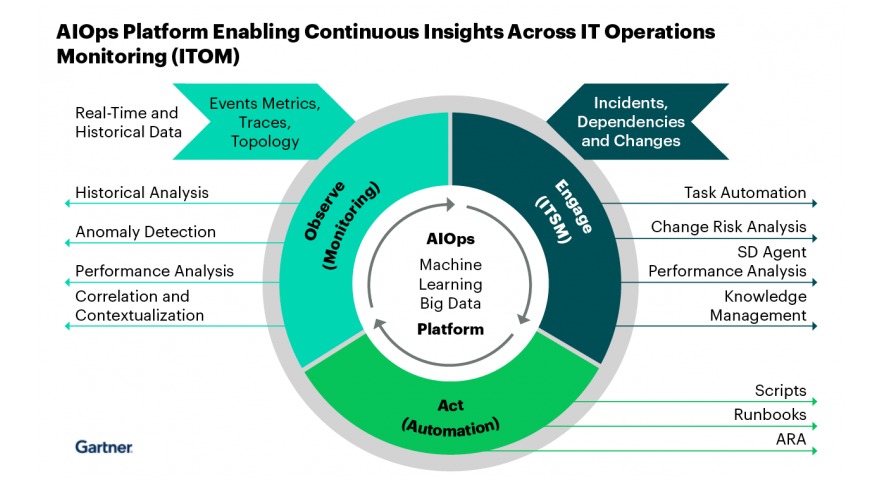
Traditional understandings of the role and responsibilities of IT within an organization are undergoing a major facelift. Companies are increasingly embracing a new philosophy that brings together Development and Operations: DevOps. This is a new approach to IT that allows for quicker development of new applications and continuous monitoring of programs that have been deployed. Whereas in a traditional IT setup, the feasibility of a solution is only tested once it has been delivered, DevOps involves operations teams throughout the development process.
The scope of DevOps includes everything from organizational frameworks to company-wide processes and culture.
In a nutshell, the DevOps model allows companies to create viable applications and programs within a much shorter time frame, thus accelerating the speed of innovation.
Some reports predict that the worldwide DevOps software market will be worth $6.6 billion by 2022. What is the significance of DevOps for your company and is it time you invest?
An agent of change for business culture
DevOps is not a type of software per se but is more of a concept. As companies move away from a siloed structure and towards greater collaboration, DevOps will become a powerful tool to enable that type of business transformation. It brings together various departments such as IT, Product, Engineering, Cybersecurity, Operations and more, and unites them in the common objective of achieving business targets.
In this approach, the software is seen as a tool to improve organizational efficiency and security by automating several key processes. One of the greatest benefits of DevOps is that it brings IT to the forefront, and uses IT-driven solutions to delight customers and streamline business processes.
Also Read: 5 Red Flags That Say it’s Time to Reengineer Your Legacy Software
DevOps benefits #1: Shorter development lead times
In a conventional organizational setup, IT works largely independently of other teams within the company. For example, if Operations requires a certain application to be developed, they simply send in the request and IT starts developing it. Only once the application is completed is it sent to Operations for feedback. In many cases, the end-product might not completely align with what Operations had envisioned and there will have to be multiple iterations before it fulfills the requirements. Because of this, the total time taken for an application to be successfully deployed becomes extended.
In a DevOps model, however, Operations will be actively involved in the development process. This process is called CI/CD (Continuous Integration/Continuous Deployment). Continuous Integration involves making incremental changes to the code while it is being developed and Continuous Deployment ensures that the end-product is delivered quickly and adopted fast by users.

DevOps benefits #2: Greater stability of IT software applications
DevOps isn’t just an organizational buzzword, it has huge implications for security. A contributing factor to extended deployment times is code failures or defects. Continuous Integration addresses this challenge by implementing frequent code changes in shorter cycles. This allows teams to identify issues with the code much faster and resolve them quickly. IT gets continuous feedback from end-users and can use this information to develop a bespoke solution that truly addresses the team’s requirements.
DevOps uses a number of automation tools to achieve this. Code can be automatically run through programs to detect issues with the code, negating the need for a manual check each time. Project management software can easily delegate tasks and assign timelines to various teams involved in the development process. This allows teams to work in parallel instead of waiting for one part of the project to be completed before passing it on to the next team. Organizations are also embracing a single environment for development, testing, and deployment, so teams do not have to waste time transferring data from one environment to the other – a process that risks code getting lost or damaged.
Also Read: Custom ERP Software vs. Off-the-Shelf: What’s a better choice?
Potential roadblocks to implementing DevOps model
DevOps isn’t just a matter of installing new software, it’s about fundamentally changing organizational culture, workflows and mindsets. Because of this, adopting DevOps cannot be an overnight decision, there need to be sufficient building blocks in place first.
The first step to success is to clearly define the expected outcomes and identify quantifiable metrics to track. Whether your end-objective is higher cost-savings, shorter time to deploy, or improved security, it’s important that you go into the project knowing what you want to gain from it. The second challenge to DevOps adoption is a lack of stakeholder buy-in. The entire process can be complex at first so it’s important to have a strong evangelist to spearhead the mission and get the necessary approvals. Without a strong leader at the helm, the implementation of a DevOps culture can quickly fall into disarray.
Where is DevOps headed in the next few years?
<
As solutions built on DevOps principles start to be developed, the exact nature of the process might change, but its philosophy will remain the same.
At its core, DevOps helps build IT teams that are more agile, responsive, and aligned to larger organizational goals. To that effect, technologies like AI and ML can help automate several routine IT tasks, freeing up more time for teams to focus on larger strategic initiatives. A branch of AI called AIOps was first coined by Gartner. Is becoming a core part of DevOps. AIOps is specifically designed to support DevOps and includes specific DevOps tools. to quickly detect anomalies, develop insights, structure processes and predict outcomes. For instance, Kubernetes is a popular open-source DevOps tool that is used to automate the deployment and management of containerized applications and the DevOps tools monitor application health continuously. These technologies will require an even greater emphasis on cloud technology to enable greater internal collaboration, a key component of DevOps.
AIOps component technology includes big data, machine learning technology, and automation.
The DevOps model is often viewed as an abstract concept, but the results are very much tangible. More efficient use of IT resources can lead to cost savings of almost 30%. Time to deploy is also considerably faster, meaning that employees can reap the benefits of smarter solutions in much less time. In a world where a company’s success often depends on the speed with which they push innovations, leveraging DevOps could be a major differentiating factor.






